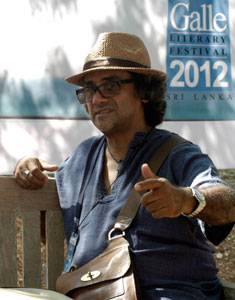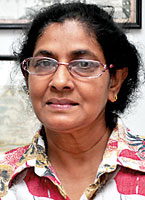“I was born to write
You may not like what I have to say
Or the way that it is said
You may not think that it's the best
Thing you've ever read
But I was born to write
When emotions find the way
To be still in time and space
When hours pass and I feel alive
As each word falls into place
I know I was born to write…”
(Born to Write)
Samantha doesn’t know how or why she started writing; she’s simply always been doing it (her parents have poetry she wrote when she was four years old – when most of us were probably not sure how to spell anything!). “If you find something interesting you just write about it” she says simply, seemingly confused as to why anyone would be interested.
But then, it’s not every day that a nearly-17-year-old publishes her second collection of poetry. And not just any old collection of rhymes either. Though In a Head Like Mine features poems from when she was between 10 and 14, there’s quite some depth of thought in the works. ‘You From Where?’ and ‘Jesus, My Shooting Star’ for example deal with serious issues that are personally very important to Samantha: identity and Christianity. “I try to put a little bit of humour in it, but [Christianity] is a big part of who I am, so I’m not gonna joke about it” she tells me, matter-of-fact.
But more often than not, there’s lots of humour in what she writes. She pokes fun at her not-so-tech-savvy mum, her super-spy brother, her friends, and just picks up little things (homework, dust-balls, vegetables, cockroaches!) from everyday events, adds lots of wit and sarcasm, whips it together with tonnes of imaginative insanities and puts together a delightful concoction of unbelievably good poetry.
And then she illustrates them too! Samantha’s second love (after writing) is drawing, a flair for which she loves to show off. “That’s something I’m not embarrassed about” she laughs, explaining that since she simply draws images, and not what she feels, she’s not as self-conscious about her painting as her poetry. “The reason why this book took so long to come out was that I really didn’t wanna publish it” she admits, “I write for me, and if you read the stuff I write, then you know a lot about me, it’s very personal”.
She begins, in a mocking, super-flowery accent describing how her parents have “always been very supportive” (they have the kind of relationship that leaves no room for false emotion but plenty for good laughs) but gets serious with a truth she took “a long time” to realize. “I recognize the importance of not being ashamed of what you have”. Publishing has helped her share and assert the strength she receives from knowing that “this is what I do, and it’s good”.
How she switches modes, from playful to serious, confused to confident, reveals not only what seems an instinctive desire to “capture” and highlight moments (as she does with her poems) but also her love of treading the boards. “I love to act!” she smiles, a tad regretful though, that she doesn’t have more opportunity to do so. Now, we’re starting to think she’s one of those “perfect” girls from out of a movie. She has smooth but striking features and a slender figure, tops most of her classes, wins prizes, writes, acts, draws, sings a little, plays a little sports, and everyone seems to love her. But Samantha Modder defies the box I’ve arranged for her. “We got kicked out of here (the quiet little tea-shop where we’re having our highly animated and giggle-punctuated conversation) once for playing Uno” she tells me quietly, grinning broadly, “cus we were banging our hands down on the tables really loud and stuff”.
The story, in fact, is not all that difficult to believe. There is a persistent glint in young Miss Modder’s eyes that sparkle as they roam the area, seizing things up, and I learn, she is not fond of jewellery, heels, party dresses or shopping. She will most definitely not be stereotyped.
It’s quite likely that it is this quietly rebellious streak in her that makes Samantha’s writing so surprisingly mature and well-controlled, allowing her to see and represent the irregularities in everyday situations. “So this is what it feels like/To be alive” she writes at 13 years old, in ‘I Watched the Ball’, unexpectedly sensitive to the unintentionally marginalized, the true writer’s sensibility. These moments of what her father calls “thoughtful, creative calm” were not so frequent in her earlier works on aliens, haunted houses and panthers drinking Fanta, as they are now. The passion and intensity of a few more years added to her age are starting now to show on her notebook of scribbles and doodles;
“There's a pain deep inside me
That never goes away
It sits and hides quietly
Waiting
For the moment, for the word
That will make it come
Gushing out
In hot salty tears
And tiny little gasps
Of air as I try to breathe…”
(untitled)
“Love?” we wonder aloud, to which the sweet-sixteen laughs. “I've never been in love, and I haven't imagined myself in love, AND I think that most people who think they're in love aren't really in love... So!” you really can’t expect her to be how you expect, or to feel uncomfortable that she is not what you expect, because in her own words;
“…right now, right here, this very place
I know what I must do
Sculpt these words and form these lines
'Cause I was born to write
For you.”




